Listen to the Podcast
12 Apr 2024 - Podcast #877 - (19:32)
It's Like NPR on the Web
If you find the information TechByter Worldwide provides useful or interesting, please consider a contribution.

If you find the information TechByter Worldwide provides useful or interesting, please consider a contribution.
Romanian security company Bitdefender offers protective applications for Windows and MacOS computers as well as Android and IOS mobile devices. The company’s licensing method uses a single annual fee for five devices or, for a few dollars more, ten (or even fifteen) devices.
I had tried Bitdefender fifteen or twenty years ago and found that, like many protective applications, it had a significant impact on performance. I have depended on Microsoft’s built-in Windows Defender since about 2015 and free versions of various antivirus programs on my MacOS computer, IPad, and Android phone. Bitdefender has attractively priced solutions for all those devices, so I signed up for a one-year program: Protection for up to 10 devices for about $75 following a 30-day free trial. That’s the first-year price. On renewal, the price increases to $120.
Click any small image for a full-size view. To dismiss the larger image, press ESC or tap outside the image.
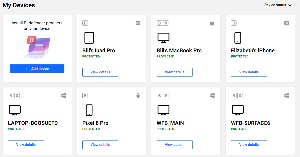 Capabilities vary by platform and the greatest functionality is for Windows computers: Real-time data protection, network threat prevention, ransomware protection, vulnerability assessment, web attack prevention, and components to protect against phishing, fraud, and spam. Bitdefender can scan IOS devices and offer protection from web-based threats. Android devices are scanned for malware, apps are analyzed as they are being installed, and there are protections against web-based threats, scams, and theft. Among other protections, the MacOS version safeguards Apple’s Time Machine.
Capabilities vary by platform and the greatest functionality is for Windows computers: Real-time data protection, network threat prevention, ransomware protection, vulnerability assessment, web attack prevention, and components to protect against phishing, fraud, and spam. Bitdefender can scan IOS devices and offer protection from web-based threats. Android devices are scanned for malware, apps are analyzed as they are being installed, and there are protections against web-based threats, scams, and theft. Among other protections, the MacOS version safeguards Apple’s Time Machine.
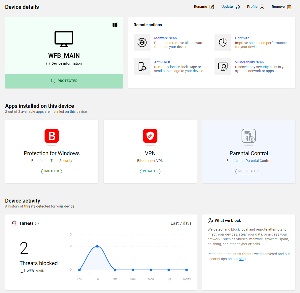 Bitdefender requires at least Windows 7 with service pack one, MacOS Yosemite (10.10) or later, IOS version 11.2 or later, and Android 5 or later. Scam alert and app analysis require at least Android 6. That’s good news for users who aren’t running the latest versions of their operating systems. The current versions are Windows 11, MacOS 14.4, IOS version 17, and Android 15.
Bitdefender requires at least Windows 7 with service pack one, MacOS Yosemite (10.10) or later, IOS version 11.2 or later, and Android 5 or later. Scam alert and app analysis require at least Android 6. That’s good news for users who aren’t running the latest versions of their operating systems. The current versions are Windows 11, MacOS 14.4, IOS version 17, and Android 15.
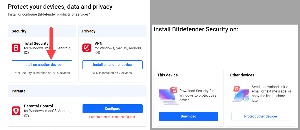 The installation process is worth noting. After purchasing a license or starting the 30-day trial, log in to your account and choose Install on another device. That terminology is a bit confusing because you’ll choose that option even if you plan to install it on the current device. This opens another window where you choose to download the application to the current device or to send a download link to another device using email or SMS messaging. I used the SMS option to install Bitdefender on my older daughter’s phone.
The installation process is worth noting. After purchasing a license or starting the 30-day trial, log in to your account and choose Install on another device. That terminology is a bit confusing because you’ll choose that option even if you plan to install it on the current device. This opens another window where you choose to download the application to the current device or to send a download link to another device using email or SMS messaging. I used the SMS option to install Bitdefender on my older daughter’s phone.
The user interface is clear with four primary tabs: Dashboard, Protection, Privacy, and Utilities in addition to tabs for Notifications and Settings.

Bitdefender will replace Microsoft’s firewall with its own. Unless you understand what a firewall is intended to do and how to set exceptions, it’s probably better not to mess with the settings. The firewall seems to be well balanced between missing threats and creating too many false alarms.
I’ve ignored Bitdefender’s free built-in virtual private network (VPN) because it’s limited to 200MB of data per device per day. That’s not very much and the main point of the free VPN is to convince users to spend another $70 per year for their full VPN. If you’re already using a VPN, there’s little point in looking at this option.
Likewise the password manager, which costs another $30 per year per account. If you already have a password manager, there’s little reason to consider switching.
Those with children in the home may want to look at parental controls, a feature that’s included in the Total Security website. Parental control administration is done from the Bitdefender Central website, not from the app on any device.
Bitdefender includes two browser extensions. The Anti-Tracker extension is installed with the security suite on Firefox and most browsers that are powered by Chrome. The second extension isn’t installed by default, but is available for Firefox and Chrome-based browsers. Total Defense Traffic Light is free and can be installed on your browser with or without Bitdefender.
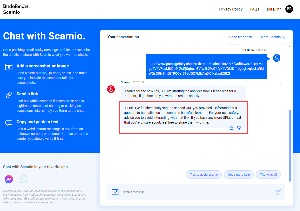 Although it’s not part of the protective suite and is available for free, the ScamIO chatbot can analyze a screenshot or image, a link, QR code, or text from an email or instant message. The functionality is built in when Bitdefender is running on a mobile phone, but you have to grant it permission to read all your text messages.
Although it’s not part of the protective suite and is available for free, the ScamIO chatbot can analyze a screenshot or image, a link, QR code, or text from an email or instant message. The functionality is built in when Bitdefender is running on a mobile phone, but you have to grant it permission to read all your text messages.
When you want to delete a file so that it can’t be recovered, use Bitdefender’s File Shredder. But use it with caution because the technique (Department of Defense 5520.22-M three-pass specification) performs so many writes that it can shorten the life of a solid-state drive. Reserve File Shredder for data on a hard disk drive.
Overall, Bitdefender has little effect on machine performance. When it automatically updates itself, if you set it up to do that, you’ll see a warning that the computer is unprotected for a few seconds. During that period, Microsoft Defender steps in until Bitdefender is running again. For more information or to start a 30-day free trial, visit the Bitdefender website.
The company that provides your internet service would like you to rent a modem from them. The telephone company used to work that way, too. People couldn’t own phones in the United States until the 1980s. Every month, in addition to paying for telephone service and long-distance calls, consumers paid for the phone itself. It took an order from the Federal Communications Commission to change that as of 1 January 1983.
Today most people have mobile phones and many now have no landline phones at all. Unless you opt to use a 5G wireless plan for internet service, you still need a modem, though. But you don’t need to spend $15 per month to rent the modem when you can buy a modem for about $100. So the modem will be “free” after 7 months.
If you buy a modem, make sure it complies with DOCSIS 3.1 standards. DOCSIS (Data Over Cable Service Interface Specification) specifies, among other things, how fast the modem is. Version 4.0 technology is available in some high-priced combination router-modems, but you’ll want that technology only for connections at speeds of 1Gbps or faster, and only if those speeds are supported by your provider. Don’t expect widespread support until 2025 or later.
Click any small image for a full-size view. To dismiss the larger image, press ESC or tap outside the image.
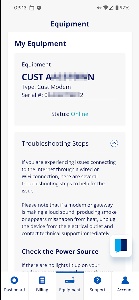 We purchased a Motorola MB8600 DOCSIS 3.1 modem in September 2021 for about $150, so our “free modem” began in July 2022 and we will have saved $360 as of July this year. Many service providers advertise free modems for the first year or two of new service, so if you’re looking for maximum savings, take the provider’s modem until the end of the free period and then buy your own.
We purchased a Motorola MB8600 DOCSIS 3.1 modem in September 2021 for about $150, so our “free modem” began in July 2022 and we will have saved $360 as of July this year. Many service providers advertise free modems for the first year or two of new service, so if you’re looking for maximum savings, take the provider’s modem until the end of the free period and then buy your own.
 Larger providers make it relatively easy to use your own modem. Previously, customers who installed a modem had to call the provider and have tech support activate the modem. Perhaps the providers figured out that this was costing them too much money and many now allow users to activate cable modems online and, if needed, reset the modem. My provider, Breezeline, provides an online troubleshooting guide. You’re wondering how to use the troubleshooting guide or reset the modem if the modem isn’t working because it needs to be rest, aren’t you? Good question. Use your internet service provider’s phone app.
Larger providers make it relatively easy to use your own modem. Previously, customers who installed a modem had to call the provider and have tech support activate the modem. Perhaps the providers figured out that this was costing them too much money and many now allow users to activate cable modems online and, if needed, reset the modem. My provider, Breezeline, provides an online troubleshooting guide. You’re wondering how to use the troubleshooting guide or reset the modem if the modem isn’t working because it needs to be rest, aren’t you? Good question. Use your internet service provider’s phone app.
Some cable modems have a built-in router and include Wi-Fi. That’s true of the Technicolor CGA4234 modem that Breezeline provided (it was still Wide Open West at the time). I already had a router, so I didn’t need the Wi-Fi in the modem. If you don’t have a separate Wi-Fi router, you’ll need to buy a modem that includes a router.
Saving money isn’t the only reason to provide your own modem and router. The device the ISP provides may not offer the latest technology. When a customer returns a modem because they’ve signed up with another service, moved to a new location, or exchanged a faulty device for a new one, the ISP will quickly inspect it. If it seems to be working, it will be reset to factory settings and eventually sent out to a new user. The modem or combination modem-router you buy will be new and fully under your control.
The hardware provided by internet service providers is usually adequate, but when you provide your own hardware you can ensure that it has the features you want. This might mean a combination device that supports Wi-Fi 6 or one that has built-in enhanced security features. Or it could be a device with advanced bandwidth management to ensure that streaming video doesn’t stutter and serious online gamers don’t have to deal with lags.
Renting hardware from your ISP is easy, but buying your own can result in better service and lower costs.
Every few months, Facebook is inundated with scam ads for discounts on US Postage stamps. Hint: The US Postal Service does not run sales. The price of a stamp is the price. Period. So why do people fall for this nonsense? And why does Facebook allow it?
OK, that’s two questions. One might have a reasonable answer. The other, if it has an answer isn’t reasonable.

Ads like these appear in groups. Maybe a dozen or more in a single day from a variety of accounts. Does Elizabeth Bob sell postage stamps? How about “Amazon us postage stamps for sale”, which is not associated in any way with Amazon.com? Or maybe “Postage stamps for sale online”?
These posts are all fraudulent. They’re offering 100 Forever stamps for $14. But the same ad also offers 100 Forever stamps for $29. If an offer seems too good to be true, it probably is. It’s an old saying. It’s also true. So how can these places charge just 14¢ (or maybe 29¢) for stamps they paid 68¢ each to buy? And include free shipping!
Easy answer: They can’t.
If you make a purchase, one of two things will happen: You’ll pay for stamps you never receive or you’ll receive counterfeit postage stamps.
So you pay, receive your phony stamps, and use them. What happens next? Perhaps one need not say that the scanning software used by the Post Office can detect the fraudulent stamps. As the USPS says on its website “The Postal Service determines that postage is counterfeit utilizing several methods and indicators. The Postal Service cannot discuss these methods, indicators, or security enhancements. Revealing this information could lead to misuse of the information and enable the creation of counterfeit postage.”
Mail with counterfeit postage is not delivered and you or the intended recipient may receive a message from the Post Office that says: The package associated with this tracking number was found to bear counterfeit postage and is now considered Postal Service property under USPS regulations and will not be delivered. You are encouraged to contact the sender/merchant and/or your credit card company, as applicable, to seek a refund or other available recourse.
Or the message might say: Your item has been seized by Law Enforcement due to counterfeit postage. Please contact the merchant or seller to request a refund.
Presumably, those who use a lot of scam stamps will be identified, charged, and prosecuted. Meanwhile the scam postage advertisers, many of whom are in China, continue advertising on Facebook.
So my question: So why do people fall for this nonsense? And why does Facebook allow it?
Albert Einstein supposedly said “Only two things are infinite, the universe and human stupidity, and I’m not sure about the former.” Quotations are tricky. Abraham Lincoln, for example, warns us not to believe everything we read on the internet. But whether Einstein said it or not, human stupidity does seem to be infinite.
That was the question with the easy, logical answer.
It’s pretty clear that Facebook prioritizes revenue over safety. Users don’t pay a Facebook subscription fee, so the primary revenue source is advertising. Scammers exploit this by creating deceptive ads that target vulnerable users.
Facebook offers ways for users to report false ads, but whatever the company does to quash the scammers is ineffective because false and misleading advertisements thrive.
So there’s another answer that seems logical, but is it? History is littered with the bones of companies that thought they could do whatever they wanted. It may surprise Meta’s management to learn one day that if somebody builds a better Facebook, one that actually takes seriously the safety and security of its users, Facebook could turn into Faillbook.
That’s what make the answer so illogical.
TechByter Worldwide is no longer in production, but TechByter Notes is a series of brief, occasional, unscheduled, technology notes published via Substack. All TechByter Worldwide subscribers have been transferred to TechByter Notes. If you’re new here and you’d like to view the new service or subscribe to it, you can do that here: TechByter Notes.